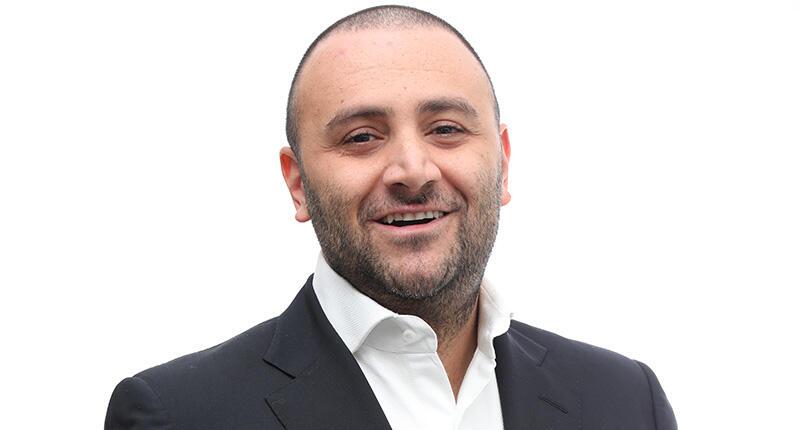Edahn’s Take: Analyzing the 2025 ‘$100 Million Supersellers’ List
In a special column for the State of the Majors, Edahn Golan breaks down what the top-performing fine jewelry sellers are doing right.

Conventional wisdom in many corners of the jewelry industry is that 2024 was an OK year for the U.S. retail market. Some will point out that sales figures were, at the very least, positive compared with 2023.
And it is true, to some extent.
Overall U.S. jewelry sales did increase, up on average by 2 percent, but the butter was not spread evenly.
Higher-end companies, such as Cartier-owner Richemont, and large mass retailers, such as Costco, successfully increased jewelry sales by double-digit percentages, as the 2025 State of the Majors “$100 Million Supersellers” list shows.
Pandora is another retailer with a notable increase in sales, also up double digits at the stores it owns and operates in North America.
While companies like Richemont, Costco, and Pandora pulled the average up, there were many retailers that recorded a decline in jewelry and watch sales.
Most notable among them are jewelry retailers with a lot of stores in malls.
As many of you are aware, malls are suffering from a decline in foot traffic and, as a result, sinking sales, making the once-popular shopping centers a less-than-ideal location for most retailers.
There were other factors that contributed to the industry’s so-so results for 2024, including lab-grown diamonds.
The Desire for ‘More’
American consumers, in a constant pursuit of a better price and “more,” are displaying an appetite for this diamond option that costs 85 percent less than natural diamonds and comes in sizes of 2 carats and larger, making them a fit for the more-for-less consumer.
For many retailers, this means their customers want a product they often would rather not sell.
The aversion is pure economics.
With the average lab-grown diamond unit price on a constant downward slope, declining faster than they can increase unit sales, retailers are in somewhat of a clash with their clientele.
Another driver is location.
As noted above, malls have lost their appeal.
In a more figurative way, location is also part of what is hurting online specialty jewelers.
Their marketing costs, aimed at top online positioning, are 20-30 percent of net income. Cutting back on marketing, which most did, negatively impacted their sales.
Finally, there is a cultural shift that must be considered.
In the past, men would consult the women close to their significant other—mothers, sisters, friends, etc.—about what ring to buy.
Often, the advice concluded with a warning, “And remember, don’t be cheap!” That pressured grooms-to-be to spend more.
Today, couples often shop together, and the pressure to spend is therefore reduced. Getting a large diamond at a much lower price is now not only possible but also acceptable.
Just look at the drop in the average price of diamond engagement rings over the last five years. What was once a $3,200 to $3,600 purchase averaged just $2,700 in 2024.
At specialty jewelers, the trend was no different. The previous average diamond engagement ring spend of $5,800 declined to $4,800 in 2024, for all diamonds.
While engagement rings set with natural diamonds sold, on average, for $6,700, their lab-grown diamond counterparts averaged just $2,600, or 61 percent less. That is significant, as no other jewelry item took such a divergent track in average consumer spending.
Considering the importance of the diamond engagement ring as an anchor product, retailers’ desire to pull away from lab-grown diamonds is understandable.
Add to that the drop in natural diamond prices, the jump in gold and silver prices, plus consumers’ withdrawal from previously popular shopping places, and we have the makings of limited growth.
Finally, there is another issue at hand. The figures above are all nominal gains.
In 2024, U.S. inflation eased but still averaged nearly 3 percent, which erased much, if not all, of the increased sales many companies had.
“The question is not if there is a desire for jewelry but, rather, can we succeed in creating an experience that will compel consumers to choose jewelry over other luxury products.”
— Edahn Golan, Tenoris
The Bright Side
Don’t lose heart; it’s not all bad. In fact, opportunities abound, as those that had a double-digit increase in sales show.
Here are a few of their strategies.
— Developing and constantly refreshing their brand, as did Pandora, Tiffany & Co. (part of LVMH), and many others.
— Offering high-quality, well-designed jewelry that has a lasting appeal, as many retailers do.
— Having a very well-maintained value proposition, as Costco does with its low (and probably flat) markups.
— Marketing to maintain a client base and increase demand.
Also, while the market is consolidating, many of the retailers that grew were primarily specialty stores, jewelry- and watch-only retailers, which comprised 57 percent of the “$100 Million Supersellers” list this year, up from 51 percent.
That tells us that specializing in your field is appreciated by consumers, especially if they are willing to spend above average.
There are signs of challenging economic times ahead for the U.S. market.
Historically, that has had a short-term negative impact on jewelry demand, followed by an early and large bounceback because jewelry is truly a necessity.
The question is not if there is a desire for jewelry but, rather, can we succeed in creating an experience that will compel consumers to choose jewelry over other luxury products.
It is largely in the industry’s hands.
The Latest

Set in a Tiffany & Co. necklace, it sold for $4.2 million, the highest price and price per carat paid for a Paraíba tourmaline at auction.

The jeweler’s “Deep Freeze” display showcases its iconic jewelry designs frozen in a vintage icebox.

Take luxury gifting to new heights this holiday season with the jeweler’s showstopping 12-carat sphene ring.

How Jewelers of America’s 20 Under 40 are leading to ensure a brighter future for the jewelry industry.

This year's theme is “Unveiling the Depths of the Ocean.”


In its annual report, Pinterest noted an increase in searches for brooches, heirloom jewelry, and ‘80s luxury.

Starting Jan. 1, customers can request the service for opal, peridot, and demantoid garnet.

Roseco’s 704-page catalog showcases new lab-grown diamonds, findings, tools & more—available in print or interactive digital editions.

The 111-year-old retailer celebrated the opening of its new location in Salem, New Hampshire, which is its third store in the state.

The new catalog features its most popular chains as well as new styles.

The filmmaker’s personal F.P. Journe “FFC” prototype was the star of Phillips’ recent record-setting watch auction in New York.

The new location in the Design District pays homage to Miami’s Art Deco heritage and its connection to the ocean.

Inflations, tariffs, and politics—including the government shutdown—were among consumers’ top concerns last month.

“Longtime favorite” presenters, as well as first-time speakers, will lead talks and workshops at the annual event in Tucson next year.

Silas Smith of Meridian Metalworks won the challenge with his pendant that blends Australian and American landscapes.

The sale of the 31.68-carat, sunset-hued stone was part of Sotheby’s first series of events and auctions in Abu Dhabi.

The collection features characters and motifs from Ukrainian folklore, including an enchanted mirror and a magic egg.

MatrixGold 3.11, the newest version of the jewelry design program, offers more flexibility, precision, and creative control.

The pavilion will be part of the 2026 JA New York Spring show, scheduled for March 15 to 17.

Kadet, a 1994 National Jeweler Retailer Hall of Fame inductee, helped grow the family-owned retailer in the Chicago area and beyond.

Billed as the world’s smallest wearable, Lumia Health’s new smart earrings have a health tracker subtly embedded in the back.

Don’t let those with December birthdays feel blue. Help them celebrate their month with blue zircon, turquoise, and tanzanite.

The new pink sapphire version of the piece dances with its wearer in the brand’s “Icons After Dark” holiday campaign.

A choice that’s generated a lot of commentary, Pantone says “Cloud Dancer” marks a fresh start and encourages relaxation and creativity.

The manufacturer’s holiday campaign features a gift guide filled with trending designs and jewelry that can be personalized.

The man was charged with theft, accused of ingesting the necklace while in a jewelry store in Auckland, New Zealand.

The Florida independent expanded its store from 8,000 to 14,000 square feet, fulfilling the vision of its late co-founder, Jim Dunn.





























